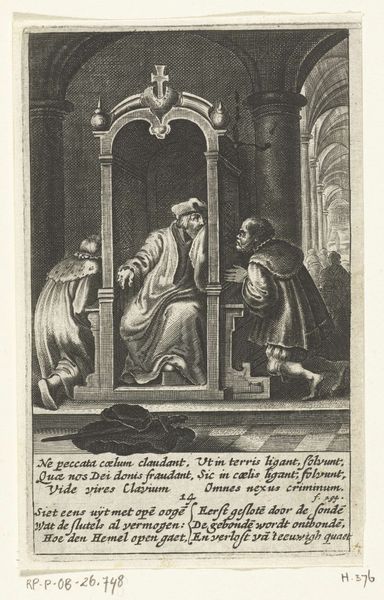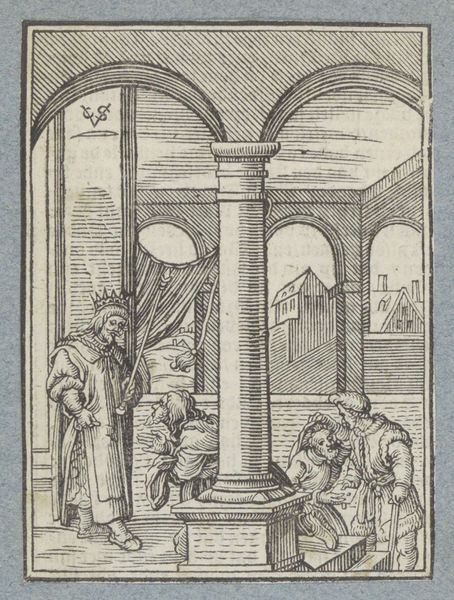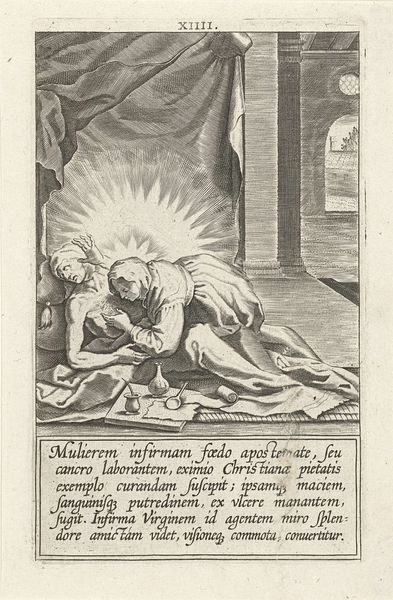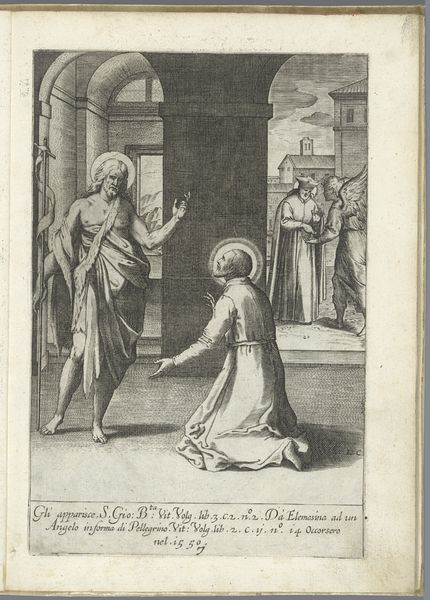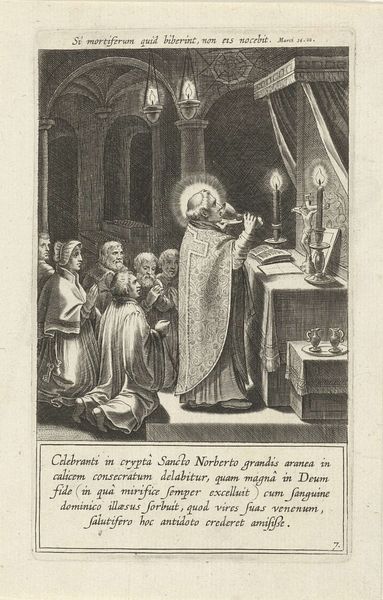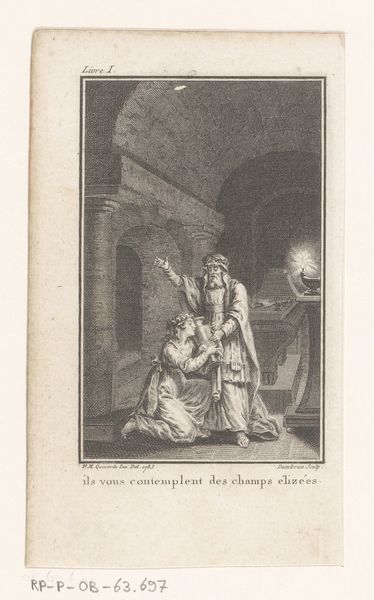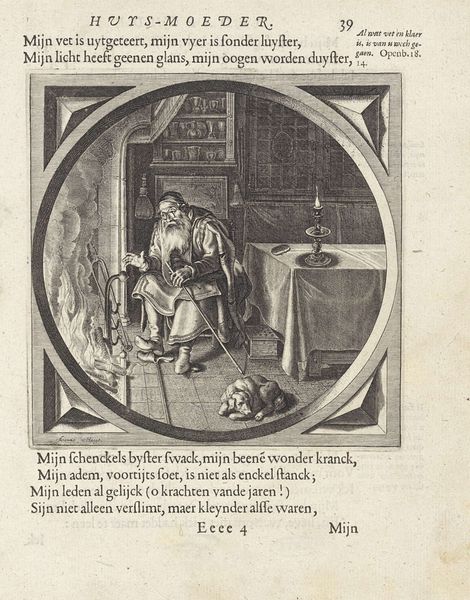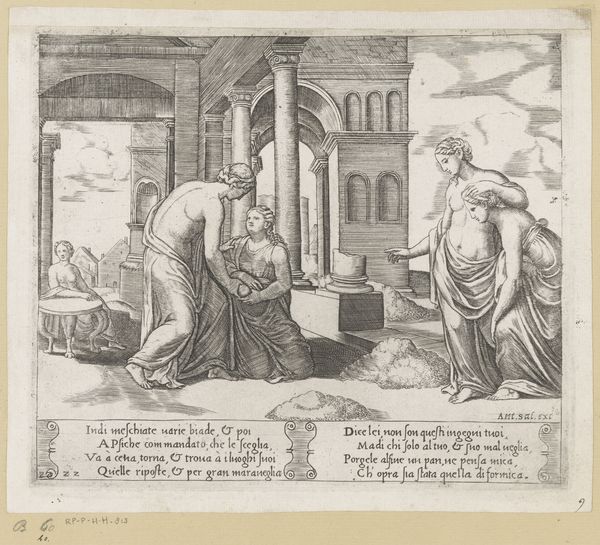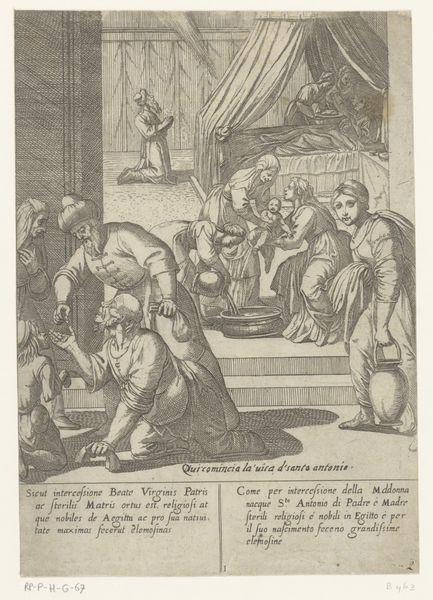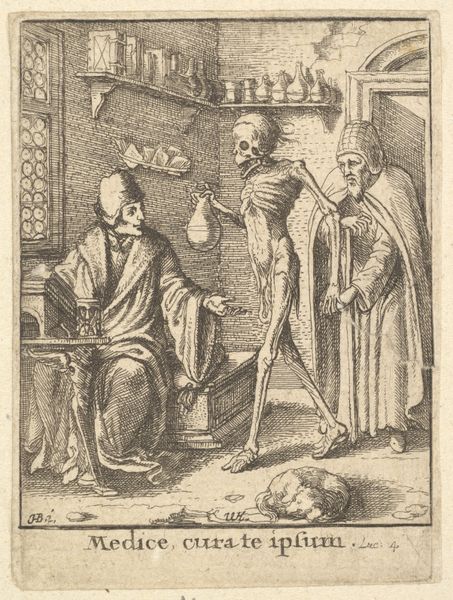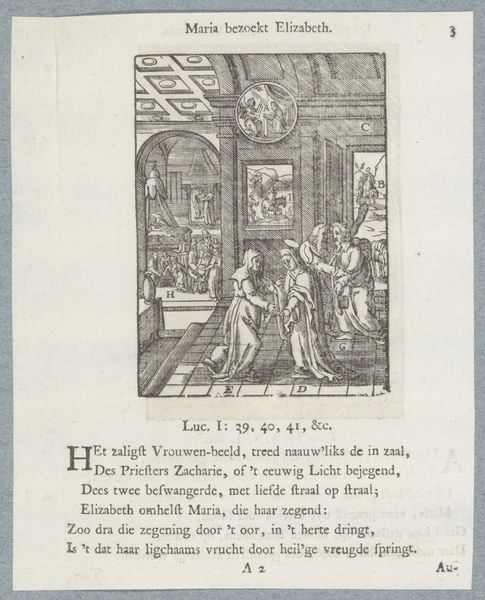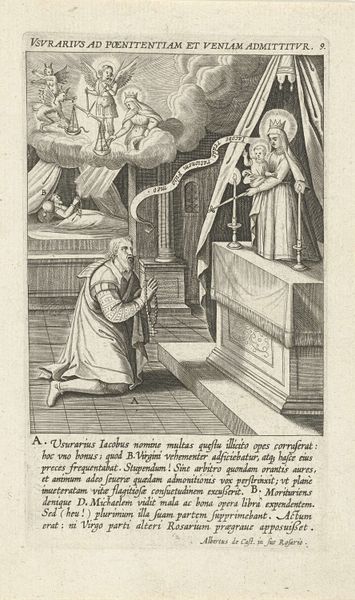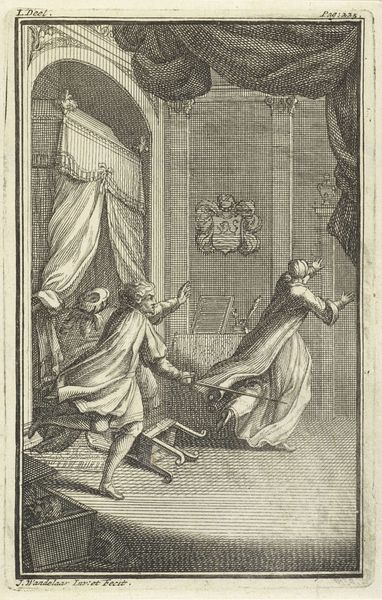
print, engraving
#
narrative-art
#
baroque
# print
#
figuration
#
line
#
history-painting
#
engraving
Dimensions: height 150 mm, width 90 mm
Copyright: Rijks Museum: Open Domain
Editor: Here we have "Catharina deelt haar mantel met Christus," or "Catharina Sharing her Mantle with Christ," an engraving by Cornelis Galle I from 1603. I'm immediately struck by how the stark lines and the contrasting light create such a dramatic and almost theatrical feel, despite the rather small scale. What can you tell me about it? Curator: Well, seen through a historical lens, this print exemplifies how religious narratives were disseminated and interpreted within a specific cultural context. Galle, working in the early 17th century, participates in a long tradition of visualizing acts of charity and saintly virtue, and of embedding that work into public and political spheres. Consider who was the audience of prints like these and what message were they inteded to pass? Editor: So, who was likely viewing this, and what did it signify to them? Curator: Prints were far more accessible than paintings to a wider segment of the population. They served a didactic function, reinforcing moral and religious values sanctioned by the Church, but they could also promote specific agendas or political positions. In this case, Saint Catharine embodies the ideal of compassionate giving – a particularly potent message within the socio-economic realities of the time, one that reminds viewers of the public role of Christian virtue. Editor: It’s interesting how art serves as both a reflection and a tool within society. I hadn't thought about how it promoted social virtue. Curator: Exactly! By examining the history of how such images were produced, circulated, and consumed, we gain valuable insight into the beliefs and power structures of past societies. Moreover, consider how museums' presentation and interpretative models of the past reflect on present sociopolitical considerations and agendas. Editor: That connection between then and now is fascinating to think about. Thanks for providing that perspective! Curator: My pleasure. It is crucial to reflect how art's past and the lens through which art is appreciated today mirror larger sociocultural discourses.
Comments
No comments
Be the first to comment and join the conversation on the ultimate creative platform.
